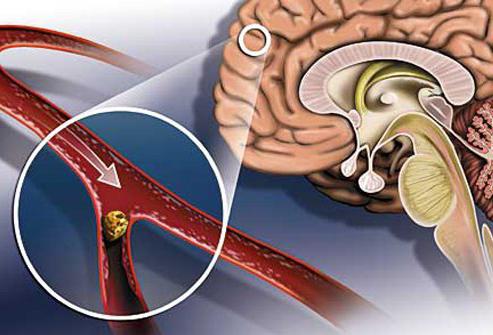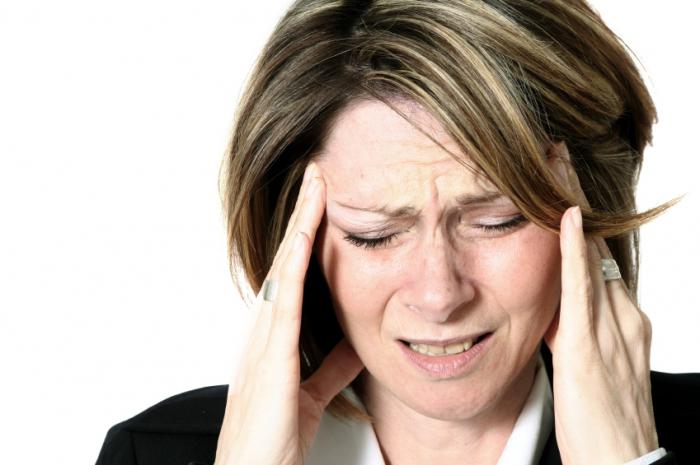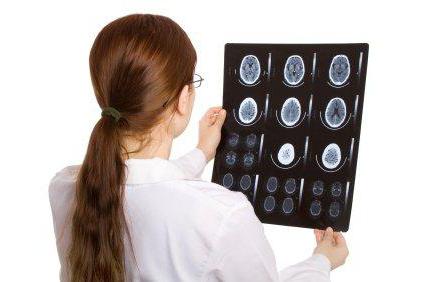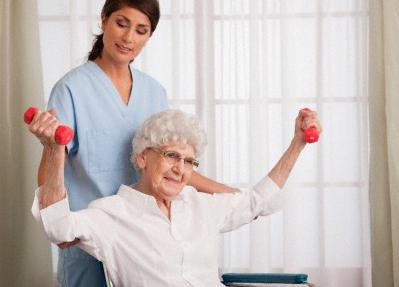A stroke is an acute violation of cerebral circulation, as a result of which the flow of blood to certain parts of the brain is partially or completely stopped. This condition leads to tissue damage, resulting in a loss of their functionality. In the event of a severe violation in the functioning of the brain, irreversible consequences for human health are possible, leading not only to his disability, but also to a possible fatal outcome.
The mechanism of the development of the disease
Depending on the mechanism of development and the causes of the disease, hemorrhagic and ischemic strokes are distinguished. A hemorrhagic stroke, the symptoms of which increase suddenly, occurs as a result of a hemorrhage in the brain. A prolonged increase in blood pressure leads to pathogenic changes in the walls of blood vessels, they lose their strength and elasticity, can no longer fully fulfill the function of a conductor for a constantly circulating blood volume. Aneurysms appear, which after rupture cause hemorrhage. Suddenly, a stream of blood penetrates the brain tissue, causing swelling and increased pressure on them. Cells die, lose their functionality.

More common and is approximately 80% of all cases of ischemic stroke. Symptoms, the first signs should be identified as early as possible. The mechanism of development of ischemic stroke is different from the causes of hemorrhagic. The ischemic type of the disease appears after the cessation of blood access to a certain part of the brain. A blockage of blood vessels by a thrombus or atherosclerotic plaque leads to this condition. Over time, lipid deposits appear on the walls of the vessels of the human body, which can form a large thickening, partially or completely blocking the blood flow. In addition, various inflammatory diseases, congenital anomalies, some chronic diseases such as diabetes mellitus, and vertebral injuries lead to vasoconstriction. The human body has a powerful compensatory system that allows you to maintain normal blood circulation even in the event of damage to one of the major main arteries. At the same time, the circulatory system is not able to cope with multiple vascular lesions and the formation of a large number of atherosclerotic plaques.
Risk factors
There are certain risk factors that increase the risk of developing both ischemic and hemorrhagic strokes. These include:
- Atherosclerosis. This disease is especially dangerous in relation to the carotid and vertebral arteries.
- Elderly age. Over time, all body tissues lose their functionality. This applies to vessels. In addition, more and more atherosclerotic lipid deposits accumulate on their walls, leading to the formation of plaques.
- Arterial hypertension. This condition leads to the development of ischemic and hemorrhagic forms of the disease.
- Diabetes. Under the influence of this chronic disease, the vessels are destroyed and cease to fulfill their functions of supplying tissues and organs with oxygen and nutrients transported with blood.
- Diseases of the heart, as a result of which the normal process of blood circulation in various organs and tissues of a person is disturbed.
- Bad habits such as smoking and alcohol abuse.
Types and periods of ischemic stroke
Ischemic stroke of the brain, the symptoms of which sometimes increase within 3 days, can be classified according to various signs:
According to the pace of formation of neurological symptoms:
- An ischemic transient attack is a neurological disorder that is focal in nature. It disappears within a day from the moment of the first manifestation. Such a violation may be, for example, blindness of one eye.
- A microstroke is a collection of long-term ischemic attacks. In this case, neurological defects appear in the period from 2 to 22 days.
- Progressive stroke. Symptoms, the first signs are manifested by an increase in neurological disorders within a few days. After this condition, the normal operation of damaged areas of the brain is completely restored extremely rarely.
A completed stroke is characterized by a constant regression in the brain and persistent neurological disorders.
According to the degree of tissue damage and the condition of patients, there are:
- A mild stroke with minor symptoms and completely restored brain function.
- A moderate stroke with a predominance of focal lesions of brain tissue and more significant neurological disorders. Consciousness in such patients is usually not impaired.
- Severe stroke is characterized by impaired consciousness, severe symptoms of neurological deficit, multiple loss of brain tissue functionality.
Various periods of the course of the disease are also distinguished. Each of these time intervals corresponds to specific symptoms of the disease and treatment methods.
- the acute period takes the first three days from the onset of the disease;
- the acute period of the disease lasts about a month - up to 28 days;
- the early recovery period takes about 6 months in the patient's life;
- the late recovery period lasts approximately two years;
- residual effects can become companions of a person for the rest of his life after a stroke.
Hemorrhagic stroke: symptoms
Hemorrhagic type of disease, in contrast to ischemic, manifests itself suddenly. Symptoms of a stroke and a microstroke develop very quickly, and there is very little time to call an ambulance and return a person to normal life. The main signs of hemorrhagic stroke include:
- weakness in the limbs, especially manifested on one side of the body;
- poor understanding of speech, inability to speak;
- sudden onset of visual impairment;
- disorder of coordination, chaotic movements of limbs;
- sudden and severe causeless headache.
Often, the patient has involuntary urination, nausea and vomiting. Muscle reflexes are impaired from the side opposite to the one in which the hemorrhage occurred.
Symptoms of Ischemic Stroke
Signs of ischemic stroke can increase gradually, and not appear suddenly, as with the hemorrhagic form of the disease. The first symptoms of a stroke depend on the part of the brain in which circulation was difficult. The most common ischemic type of disease is speech disorders. All the symptoms of stroke and microstroke can be divided into groups:
- Speech disorders. A person does not perceive speech addressed to him poorly, cannot express his thoughts in words. The pronunciation worsens, the patient’s speech is incomprehensible and incoherent. Often speech disorders are the first symptoms of a stroke in women.
- Motor impairment. Patient's movements are weak, coordination is impaired. Symptoms most often affect one side of the body. Difficulty swallowing. Often, the sensitivity of the body is disturbed on one side.
- Vestibular disorders. The patient complains about the rotation of objects in front of his eyes, the loss of spatial orientation.
- Visual impairment. For ischemic stroke is characterized by complete or partial loss of vision of one eye, blurred and blurred vision.
- Personality Disorders. The patient can not perform the usual actions, his memory and perception of events are impaired.

During an ischemic stroke, headache, nausea, and vomiting often appear. General symptoms of stroke and heart attack may also occur - redness of the face, malfunctioning in breathing, heart palpitations.
Diagnostics
To save the life and health of a person who has had a stroke, he needs to be helped as soon as possible. Otherwise, irreversible changes can occur in the brain tissues, resulting in severe neurological disorders. Therefore, it is very important to know what are the symptoms of a stroke and seek help. If there is any doubt, you can ask the patient to perform several actions:
- Ask a person to smile. To do this for someone who has a stroke is difficult. The smile turns out to be skewed, the corners of the mouth are asymmetrical. One of them is down.
- Invite a person to raise both hands. If there is a stroke, then one hand will stop below the other.
- Ask the patient to say a simple phrase. It will be difficult for a person to do this, even a sentence of three or four words will become incoherent.
- If the patient sticks out his tongue, he will be shifted to one side, skewed.
All these are symptoms of stroke and microstroke, which make it possible to suspect a disease even to a person who has nothing to do with medicine. Doctors make a diagnosis based on the presence of neurological disorders, deviations in human behavior, data from various studies. The main ones are general and biochemical blood tests, blood pressure measurement, computed and magnetic tomography of the brain.
First aid
Specialists in the field of neurosurgery believe that it is possible to return a person who has a stroke to a full life if help begins to be provided no later than 3 hours from the onset of the disease, that is, the time when the first symptoms of a stroke and microstroke appeared. In some cases, this time increases to 6 hours. If help is late, there is a high probability of irreversible changes in the brain, which threaten not only the health, but also the life of the patient. Therefore, emergency care of a person in a state of stroke should begin with an ambulance call. Then you can put the patient by lifting his head slightly on the pillows. It is worth opening the window, providing access to fresh air. It is necessary to relax various belts and buttons that prevent a person from breathing freely. In the event of an increase in blood pressure, you can offer the patient those drugs that he usually takes. Very often, during a stroke, a person begins vomiting. In this case, it must be laid on its side to avoid getting vomit in the throat.
Stroke treatment
The tactics for treating a stroke depend on the time that has passed from the onset of the disease, the condition of the patient and the severity of the attack. Medical and surgical methods are used. If a little time has passed from the onset of a stroke, special drugs are added that dissolve the blood clot. It can also be removed surgically. In the case of a hemorrhagic stroke resulting from cerebral hemorrhage and the formation of a hematoma, the latter must also be removed. These measures allow you to quickly restore blood circulation in the affected area and minimize possible complications. Stroke treatment also consists in providing those vital functions that were lost as a result of the attack. It is necessary to maintain the patient's heartbeat and respiration, to ensure a normal level of glucose and electrolytes in the blood. With the help of special drugs, blood pressure is corrected. Its level is left slightly increased, since a rapid decline can cause tissue necrosis.

During the recovery period, treatment is aimed at improving brain activity, compensating for neurological disorders. Their symptoms after a stroke can persist for a long time. Patients are prescribed drugs that improve blood circulation. A large role is given to physical therapy, exercises with a speech therapist. If the patient's condition allows, minimal motor activity can be started already in the first days after hospitalization. The sooner rehabilitation treatment is started, the more chances there are for the maximum restoration of brain functions. The patient must also be monitored by an ophthalmologist.
Consequences of the disease
In each case, there can be different complications for a person who has had a stroke. Symptoms and consequences are characterized not only by the severity of the disease itself, but also by the time during which the first aid was given to the person, as well as by the localization of the place of impaired blood circulation. The most dangerous stem stroke, which causes damage to the respiratory and vasomotor centers. In this case, there is a possibility of death as a result of cardiac arrest or cessation of respiratory activity. Patients may experience complete or partial paresis of individual limbs or completely on one side of the body, most often the opposite of the focus of the disease. Speech disturbances, memory loss are common, including problems with short-term memory. A person cannot write and coordinate his movements well. Especially often this violation is associated with a stroke that occurred in the cerebellum.

The effect of a stroke is also influenced by which hemisphere is affected. People with circulatory disorders in the left hemisphere suffer from more pronounced changes in psychoemotional indicators. They have serious problems with speech reproduction. Understanding the interlocutor, they cannot pronounce even simple phrases. In this case, those who have suffered a stroke with localization in the left hemisphere motor functions are restored faster.
Stroke prevention
Stroke prevention is closely related to the fight against atherosclerosis. It is necessary to regularly check the level of cholesterol in the blood, follow a diet prescribed by a doctor, take medications that prevent the deposition of plaques on the walls of blood vessels. Extremely attentive to their health should be people older than 50 years. Stroke, causes whose symptoms are also associated with being overweight, can lead to spikes in blood pressure and diabetes mellitus. Quitting smoking and drinking alcohol will help reduce the risk of the disease. Under special control, you need to keep diseases that lead to the formation of thrombosis. A strong half of humanity is more at risk for stroke than women. Therefore, the symptoms of stroke in men, even implicit, cannot be ignored. A healthy lifestyle, attention to your health and stress management will significantly reduce the risk of stroke.